March 28 - April 17, 2021: Issue 489
Autumn School Holidays 2021
Residents State Housing Strategy Illogical For A Narrow Peninsula With One Road In One Road Out + ''Rich With Environmental Heritage, This Place Must Be Protected For Future Generations''
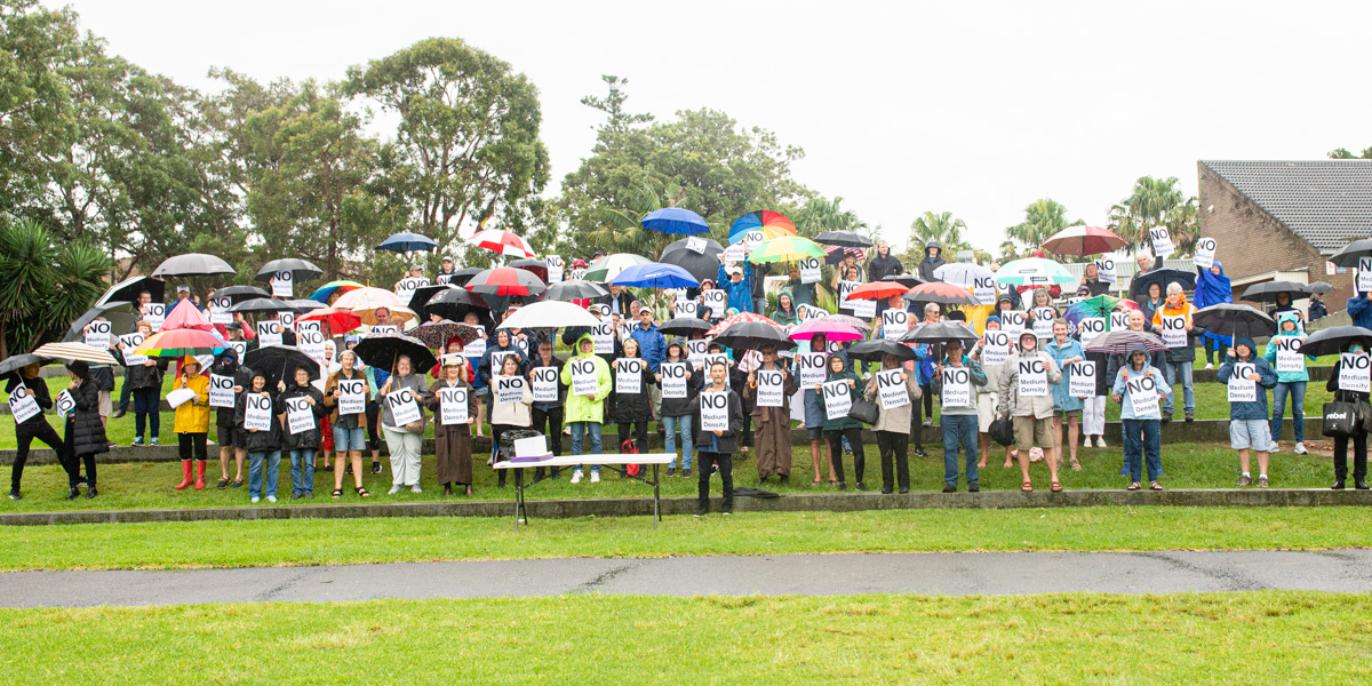
On Sunday March 21st the organisers of a rally in Mona Vale Park to protest about plans to have Pittwater carry the burden of required increased housing targets was cancelled due to this week’s weather event. The organisers knew they had to turn up to the local village green anyway, to meet those who they could not get word to, and found around 100 people turned up, umbrellas in hand, anyway.
Discussions in the community over the targets proposed by Council through its LHS documents show residents think that Pittwater, along its original LGA boundaries from Narrabeen to Palm Beach, is being targeted to carry the bulk or burden of any required increases and that what has been proposed, high density for Mona Vale, and medium density for Newport and Avalon Beach, is out of step with the true value of these places and why they have persisted in being open green spaces aligned to the flow of their natural topography.
At the recent Council Meeting, March 23rd, Mayor Regan stated it was only 1200 extra houses that will be required outside of those already within DA’s – not the 12 thousand the documents state, or that are being ‘spoken about elsewhere’.
The organisers of the rally, along with residents, point out why the proposal for Pittwater to be changed into a high and medium density housing would a disaster for the spit of land from Mona Vale to Palm Beach.
This can be encapsulated as:
1. Because this policy will lead to an increase in traffic, congestion and chaos. It cannot be otherwise. We have the evidence: the last 5 years as more DA’s have been lodged, approved and constructed. This policy will make the last 5 years look like a trickle compared to the flood it will become. Every time an original house is demolished and 2/4/6 dwellings replace it, there are more cars parked on the street, more service vehicles, more congestion. And remember, all this in an area where there is one road in, one road out. However, the draft housing strategy makes no mention of this. The government, which is telling the council to impose this policy on us, should make an honest public statement to the effect: THIS POLICY WILL INCREASE TRAFFIC CONGESTION IN YOUR AREA
2. The second big effect of all this is the loss of tree/green cover in the peninsula from Mona Vale to Palm Beach. We know that Sydney is losing canopy cover and this policy must lead to a reduced canopy cover. The government should be honest about this too, and come out with a public statement that says: YES, THERE WILL BE A LOSS OF TREE COVER IN YOUR AREA.
3. The third big effect of all this is the loss of biodiversity in Pittwater. This will mean the loss of many of our small creatures, as more and more land is concreted over, more people, more cats and dogs. Our natural environment is very much at risk. This beautiful Sydney asset could be turned into an overcrowded, over developed Gold Coast if the options of the Draft Housing Strategy are implemented. Again, An honest statement from the government: YES, THERE WILL BE A LOSS OF BIODIVERSITY IN PITTWATER
4. The third big effect for the peninsula from Mona Vale to Palm Beach is economic. We have a reputation for being one of the most attractive natural areas of the world. Local ambiance and charm is made up of the local housing, vegetation and ocean beaches and Pittwater views. For some reason, the state government wants to trash this. This policy will have detrimental effect on Sydney as an international city. An honest public statement from the government would be as follow: THE STANDING OF SYDNEY WILL BE DIMINISHED BY THE DEGRADATION OF PITTWATER.
5. Word is out that developers are salivating at the chance to start building where ever they can. This is developer driven planning. Within 5 years this area could be devastated. To randomly extend building footprints adding to hard cover with more and more concrete in a geographically and physically restricted area like this between Mona Vale and Palm Beach is an act of environmental vandalism.
Due to the weather there was only one Address given at the rally, by Avalon resident David Poppleton.
Mr. Poppleton is an Environmental Planner, Urban & Regional Planner, Past Medium Density Committee Member for the Urban Development Institute of Australia, former Member of the City West Regional Planning Team and City West Design Review Committee, Founder and National Director of Colliers Jardine Residential Project Marketing, Expert on Residential markets and maximising profitability from Residential developments. He has been and continues as a guest University lecturer on these topics.
David points out that the Pittwater Peninsula is a Unique coastal environment, one of the least changed, best protected areas of any urban area on the Australian coast. Avalon is a charming community Village, end of the line – one road in and out at the absolute extremity of the greater Sydney metropolitan area. A treasure, something to be actively protected and conserved for future generations, a place of enormous environmental Heritage.
''The Pittwater peninsula is one of Sydney’s most popular day drive destinations to enjoy the quality of the coastal village, the natural environment.''
''Local action groups have been campaigning for better environmental outcomes in the Pittwater area for over 25 years. The hard work has seen some improvements, but over time we have seen many aspects of the natural environment, especially tree cover and green space on residential lots, slowly decline.
There is nothing in the Draft Northern Beaches Local Housing Strategy to address this decline. Only plans to exacerbate it.'' Mr. Poppleton stated
''At the heart of this strategy is the State Government’s decree that Northern Beaches Council facilitate increased housing density and population in the Northern Beaches local government area, in apparent disregard of the environmental effects.''
''It is ridiculous to apply a statewide concept of allowing increased densities in a 1 klm. radius to an environmentally sensitive peninsula which from the sands of Avalon Beach direct to the sands of Clareville beach on Pittwater is only 1.7klms. This standard usually applies to a “major regional centre” usually featuring rail infrastructure, multiple road systems and surrounded by a wide and diverse range of suburban development in all directions. 1klm Is most of Avalon and Newport. This would represent the greatest proportion of any 1 place in NSW. And in an environmentally sensitive area. Its incredulous that this would be considered.'' Mr. Poppleton stated
He also spoke about the urban creep of medium density housing into areas zoned for low density suburban lots.
''The statistics that drive the perceived requirement for “seniors living” relies on the aging population of the Pittwater area. What the plan doesn’t consider is that the statistics don’t reflect the community needs. The current seniors SEPP (which is outdated and needs to be revised) proposes that being 55yrs qualifies you as a senior. We retire at 65 or older.
There are no other government or social reference to, or benefits, or allowances for people of 55 yrs as they’re not regarded as “seniors” so why does the 55 qualify as “seniors living” in a planning instrument?''
Pittwater Residents Launch Group To Protect Local Canopy
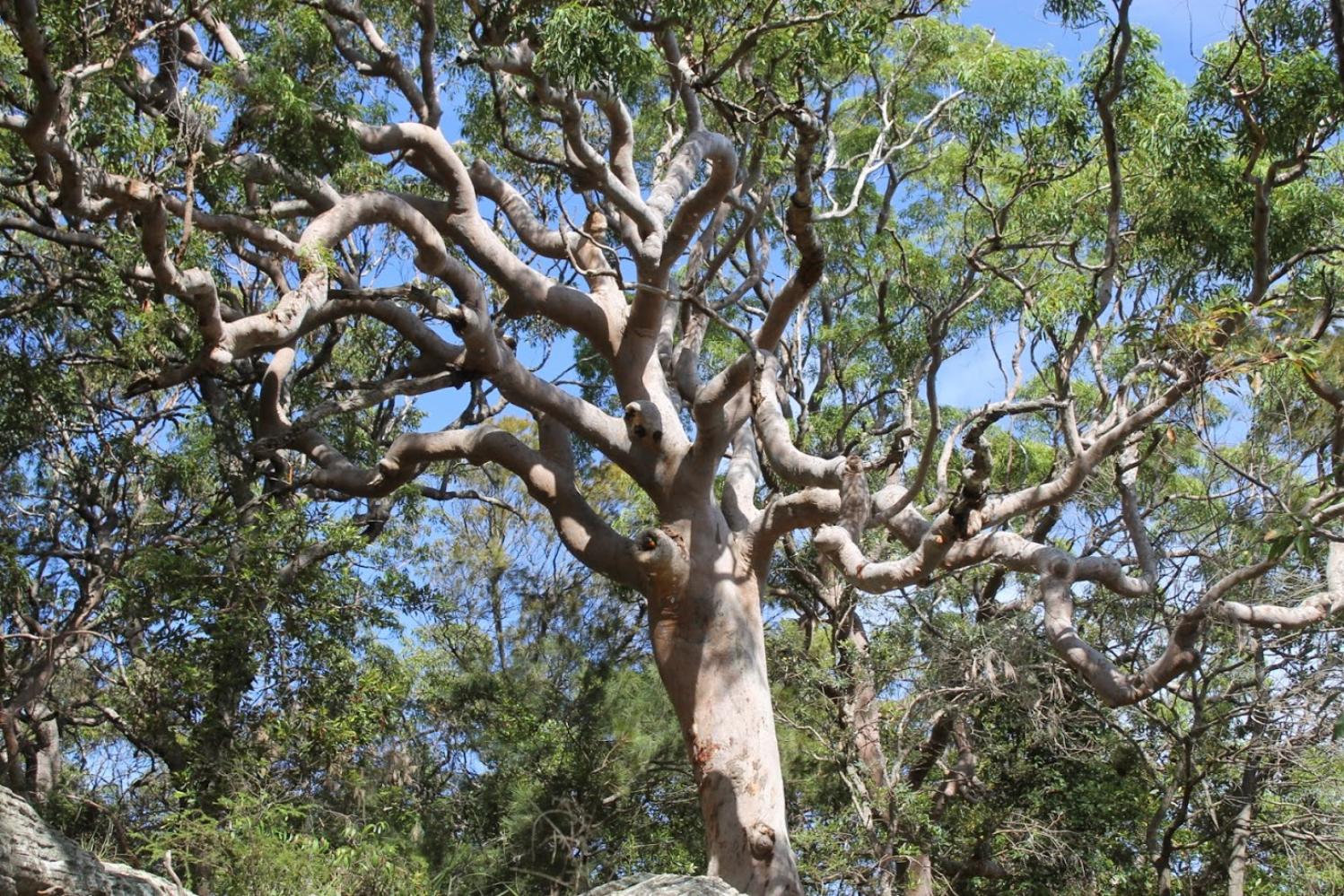
Pittwater residents concerned about the loss of trees to chainsaws in the area have set up a new group called Canopy Keepers to protect the urban forest.
Canopy Keepers spokesperson Deb Collins said the group came together late last year as locals became increasingly upset about old-growth trees disappearing - as well as the wider environmental and social impact.
Pittwater’s beautiful canopy is one of the main reasons people are drawn to and live in the area, she said.
“The timing is right for a community effort to protect our trees – after all these trees are the lungs of the world,” Ms Collins said.
“Voices around Pittwater on facebook, twitter and in conversation are saying so, loud and clear: residents are sick of hearing chainsaws as another giant bites the dust.
“So we’re joining together to raise awareness about how best to preserve this rich bio-diversity – learning from the tree and other environmental experts in the group.
Canopy Keepers acknowledges that 60 per cent of Pittwater is still covered in trees, making it one of the greenest residential areas in Sydney.
Local environmentalist Marita Macrae said these trees include towering Spotted Gums, Angophoras which turn intensely red when they shed their bark in November, and native Cabbage Tree Palms.
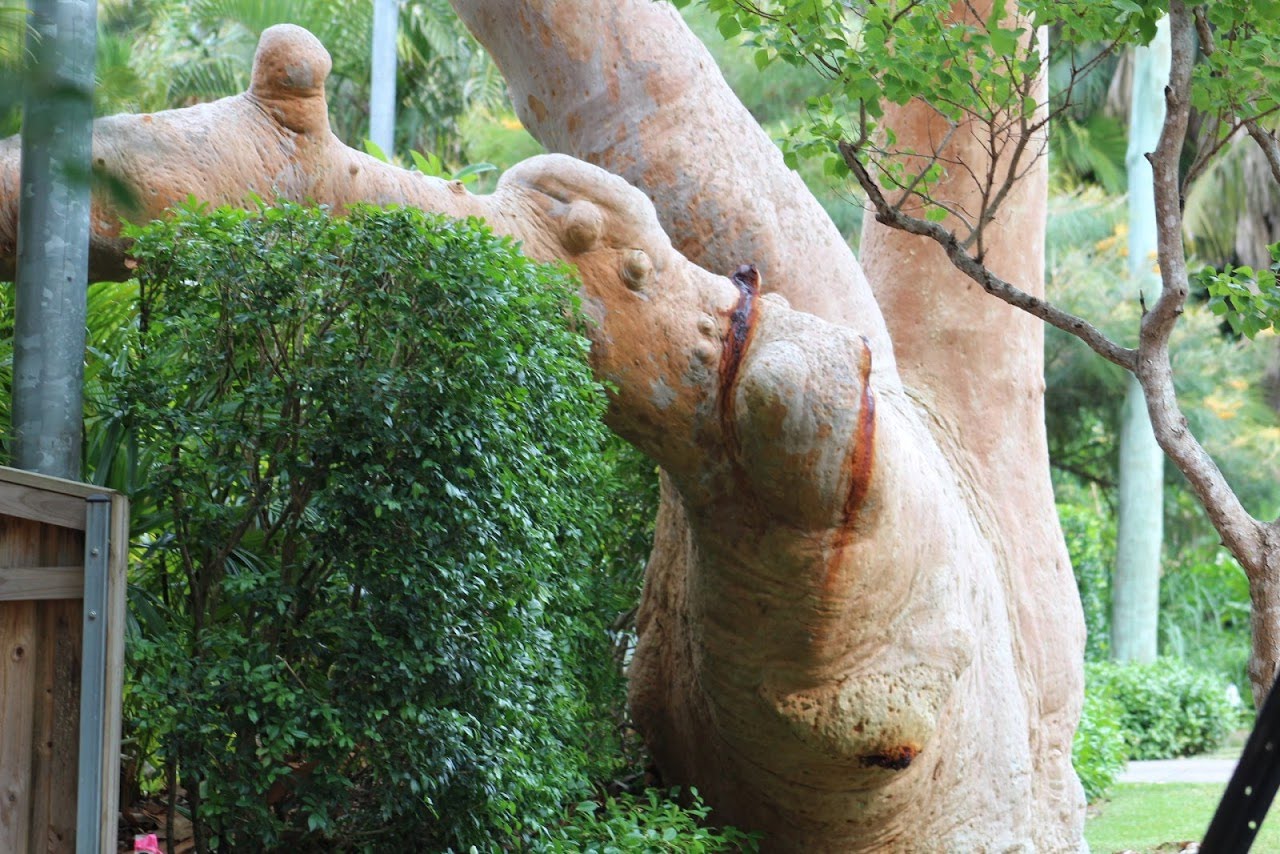
Canopy trees – the ones that tower above all the others - provide key habitat and food sources for animals like Sugar Gliders, Powerful Owls, Microbats and many more.
They also purify the air and modulate the climate. Land denuded of canopy cover can be more than 10 degrees hotter than that where it remains.
“Certainly, we need to be more aware of what the future will look like if we don’t move to protect our trees and habitat urgently,” Ms Macrae said.
“Many locals have memories of growing up with koalas in their backyards.
“They’ve gone now thanks to us cutting down their food trees, forcing them to the ground to seek their next meal which placed them in the way of cars and dogs.
“The koalas dying out should be a big lesson.”
Contemporary tree science tells us that an interconnected community of trees, with its intricate underground support system, maintains the health and the stability of individual trees.
Canopy keepers hopes to encourage residents to consider the community of trees in their area and not just the tree in their garden before they remove canopy trees.
The group also plans to lobby everyone from council to government, architects and real estate agents on more effective ways to keep the canopy strong.
It has set up a Facebook page and will launch its website in April.
For more information see the Canopy Keepers Facebook page or email us:
Email address: hello@canopykeepers.org.au
Facebook: https://www.facebook.com/canopykeepersAU
RAAF Re-Establishes No. 100 Squadron Ahead Of Centenary Commemorations - Pilatus PC-21A 's over Pittwater
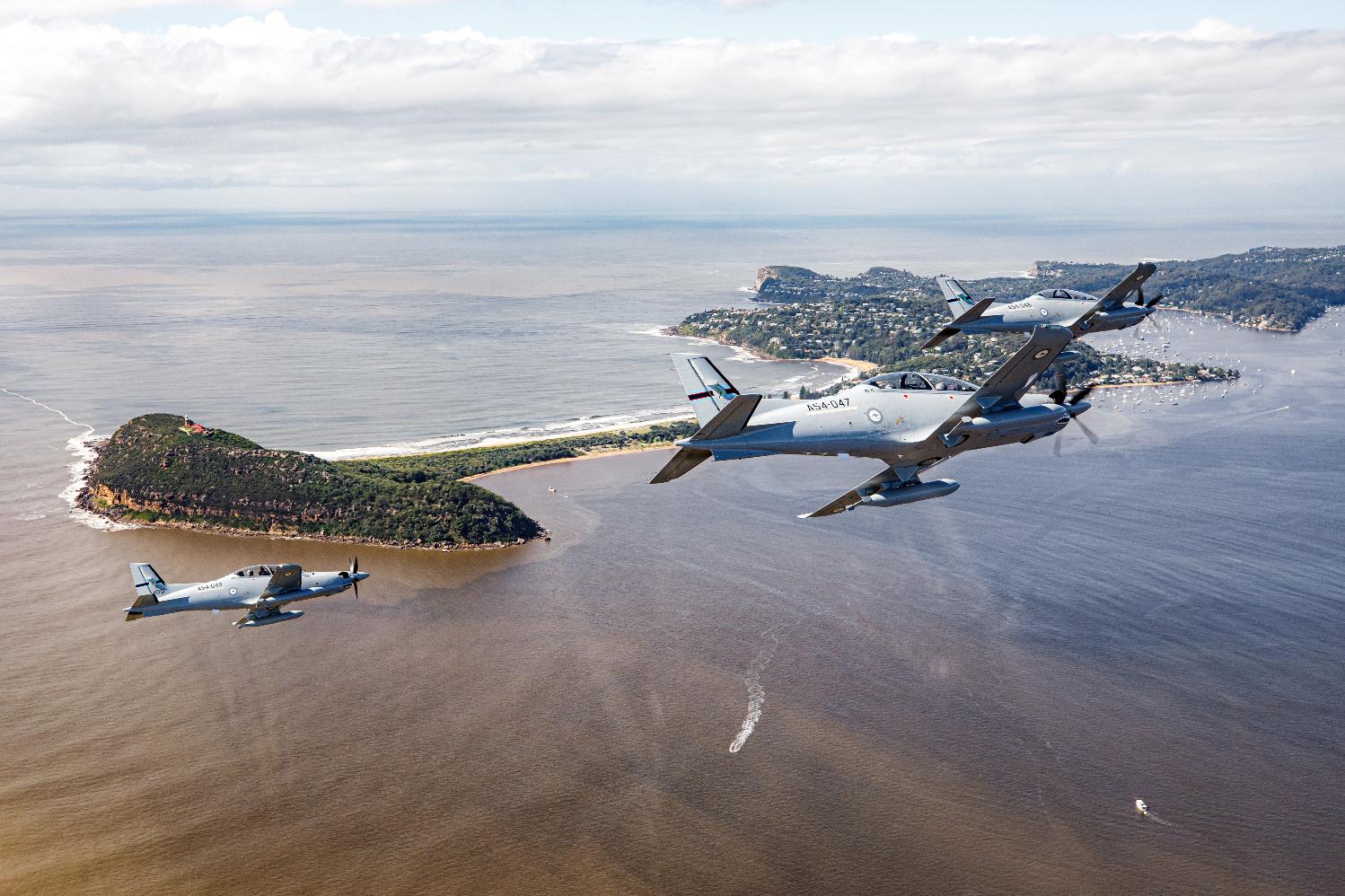
Photo: Pilatus PC-21A aircraft from No. 4 Squadron based at RAAF Base Williamtown turn on final heading to fly in formation over Sydney in support of a Royal Australian Air Force Centenary commemorative service held at the Anzac Memorial in Hyde Park. Photographer: CPL Craig Barrett
Residents from Palm Beach to Narrabeen reported the flight of RAAF jets over our area on Friday March 26th 2021. The planes were taking part in a flyover and Commemorative service.
On Friday March 26th 2021, the Air Force Association (New South Wales Branch) hosted a ceremony to commemorate the Centenary, as well as the 101st anniversary of the association’s establishment. The service was held at the Anzac Memorial in Hyde Park on Friday March 26th in support of activities commemorating the Royal Australian Air Force Centenary.
Air Force support to the event included a flypast by Pilatus PC-21 aircraft from No. 4 Squadron; members for the catafalque party and other ceremonial duties; and an address by guest of honour Air Commander Australia, Air Vice-Marshal Joe Iervasi, AM, CSC.
The flypasts by the four PC-21 training aircraft from RAAF Base Williamtown (10.53am); were joined by retired RAAF aircraft from the Historic Aircraft Restoration Society (11.25am).
During the service, a Memorial Book containing the names of all New South Wales RAAF personnel killed in the Second World War was inducted to the Royal United Services Institute library (co-located with the Memorial). Following the service, the Anzac Memorial launched its RAAF Centenary Exhibition.
On March 31st 2021, the Royal Australian Air Force will commemorate its Centenary.
At events throughout the year the Air Force will honour the sacrifice and service of its members over the last 100 years.
Ahead of centenary commemorations of the Royal Australian Air Force (RAAF), No. 100 Squadron was re-formed in February 2021 as the Air Force Heritage Squadron, operating from two locations RAAF Base Point Cook and Temora.
March 2021 1 In 100 Years Weather Event Sends Locals All Over The Beaches As Well As Far From Home To Help Others
Surf Life Saving Australia Elects New National President + New Australian Water Safety Strategy (AWSS) 2030 Launched
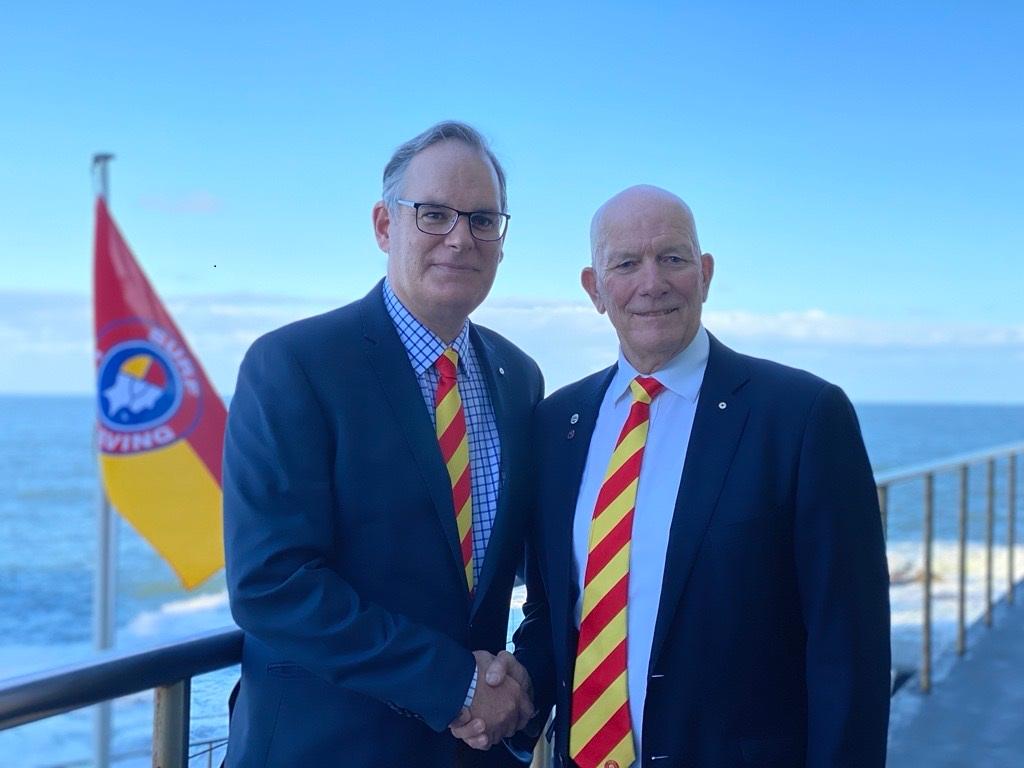
Surf Life Saving Australia is proud to announce that John Baker ESM has been elected to the position of SLSA President at today’s Annual General Meeting held at Surf Life Saving Australia’s Surf House in Bondi, Sydney, March 26th, 2021.
Mr Baker ESM will become the seventh president in SLSA’s 114-year history, taking over from outgoing President Graham Ford AM, who has served as President since 2010.
A Life Member of Brighton SLSC and SLS South Australia, Mr. Baker is the first member outside of New South Wales and Queensland to be elected President, and was extremely honoured, having served as Deputy National President of SLSA for the past five years.
“Surf Life Saving is very much apart of my DNA, I’ve been involved since I was seven, it very much defines who I am as I know it does many volunteers, so I am incredibly proud to be the seventh president,” Mr Baker ESM said.
“Surf Life Saving is a unique organisation; I think it’s probably the greatest humanitarian organisation in the world.
“There is no one else that does what we do as a vital emergency service around the country, an iconic sport, a youth organisation and also a training organisation and just a place where communities come together along the coast…it is quite unique.”
Mr Baker ESM has been an active patrolling member for over 40 years and has served as the President of Surf Life Saving South Australia for the past 10 years. He is the second longest serving volunteer crew member of the South Australian Westpac Lifesaver Rescue Helicopter Service and brings with him a wealth of Not For Profit Board experience including Australian Red Cross (SA), Virtual War Memorial Australia and The Smith Family (SA).
Mr. Baker ESM also paid tribute to outgoing President Graham Ford AM and said that the organisation was stronger because of his leadership over the past 11 years.
“Graham’s left an extraordinary legacy for this organisation,” Mr Baker ESM said.
“I think to run an organisation for ten years is great, but what he’s done in his time as President has been truly amazing for the organisation… I think we are a far stronger organisation for his leadership.”
Outgoing President Graham Ford AM acknowledged Baker’s appointment and thanked members for their service and commitment to the movement during his time as President.
“It’s just been an incredible 11 years, and I’ve met some amazing people, some amazing volunteers around the country… it’s been an incredible time and one that I’m very proud to have served the organisation as a volunteer,” Mr Ford AM said.
“I think he’ll (Baker) work with the organisation and our SLSA Board very well. He is Surf Life Saving through and through. He has that DNA in him as a volunteer and he can always talk with the volunteers and I think that’s one of the most important things to be able to do that.
“John’s been on the board now for nearly nine years, and he’s contributed a lot and he really does understand what makes Surf Life Saving Australia tick.”
New Water Safety Strategy Launched
One of Graham Ford's last duties as President of SLSA was to Launch the new Australian Water Safety Strategy (AWSS) 2030. The Water Safety Strategy seeks to significantly cut the drowning rate in Australia.
Launched by the Hon Mark Coulton, Minister for Regional Health, Regional Communications and Local Government on behalf of Senator the Hon Richard Colbeck, Minister for Senior Australians and Aged Care Services, Minister for Sport in conjunction with the Australian Water Safety Council (AWSC) on Thursday March 25th, 2021 at Parliament House, Canberra.
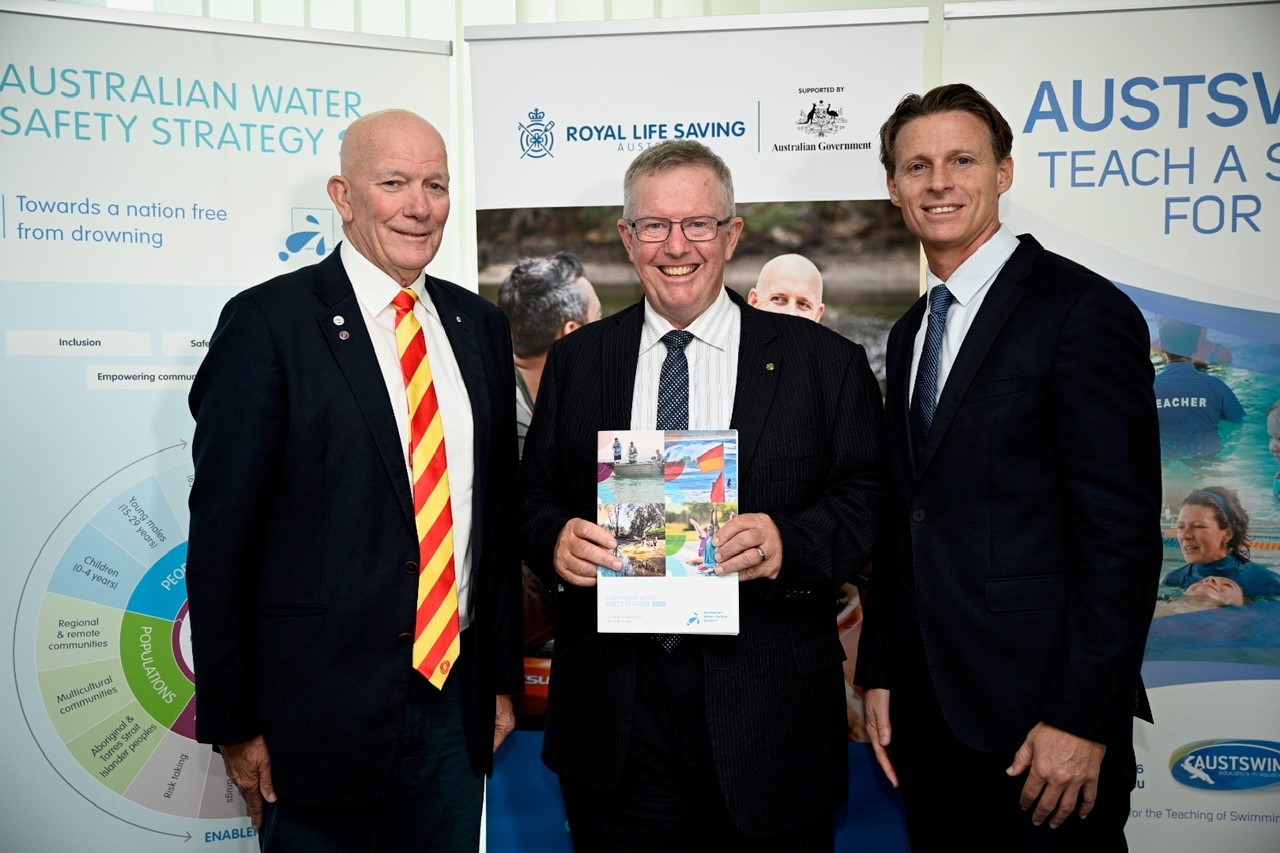
President of SLSA Graham Ford, the Hon Mark Coulton, and Justin Scarr, Convenor, Australian Water Safety Council
Each year more than 280 people die due to drowning, with many more admitted to hospital following a non-fatal drowning incident. 41% of all drowning occurs in coastal environments (beaches, oceans and rocks).
The new AWSS seeks to raise awareness about non-fatal drowning incidents, encourage communities to create local water safety plans and promote access to swimming and water safety skills for all Australians.
SLSA President, Graham Ford AM, acknowledged the significant role of 44,345 active patrolling lifesavers across the country in preventing drowning. Deloitte Access Economics recently estimated that the actions of Surf Life Saving and surf lifesavers save 1,363 lives and prevent 818 critical injuries every year.
“SLSA is proud to play a significant role in delivering outcomes aligned to the Australian Water Safety Strategy and is actively delivering in all five priority areas being: people, places, activities, risk factors and populations,” said Mr Ford AM.
SLSA acknowledges the government’s commitment to working with us to reduce the drowning rate.
To download a copy of the AWSS 2030 please click here.
Autumn In Pittwater 2021
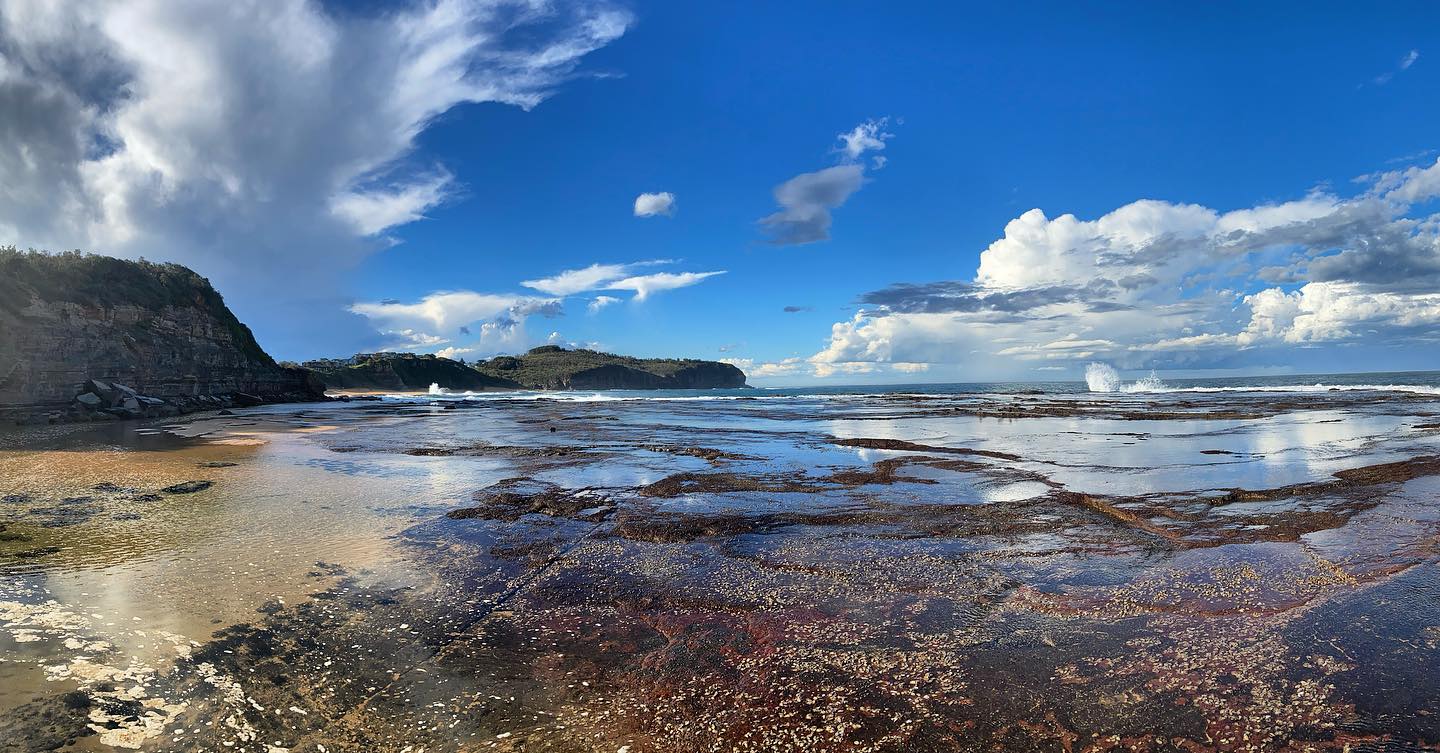
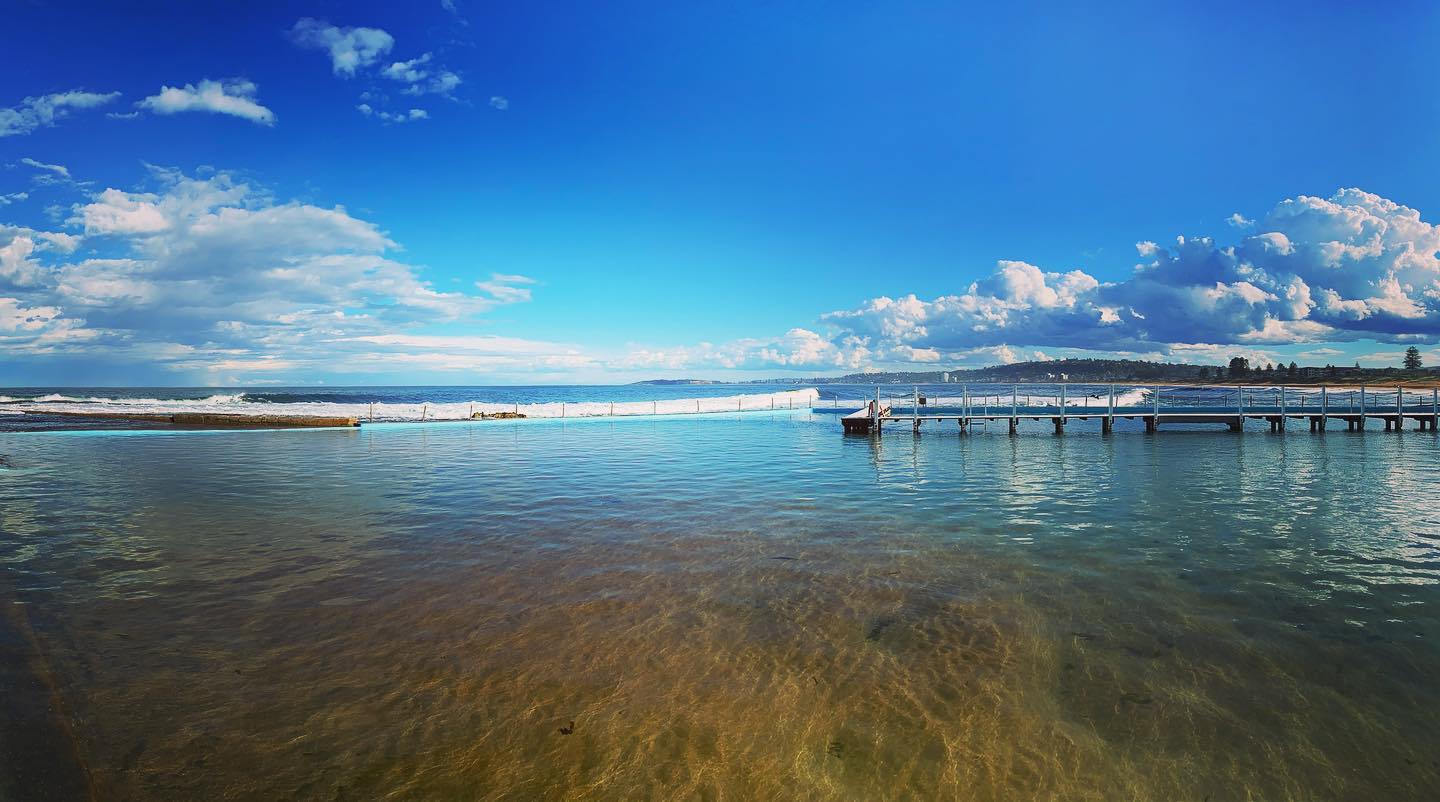
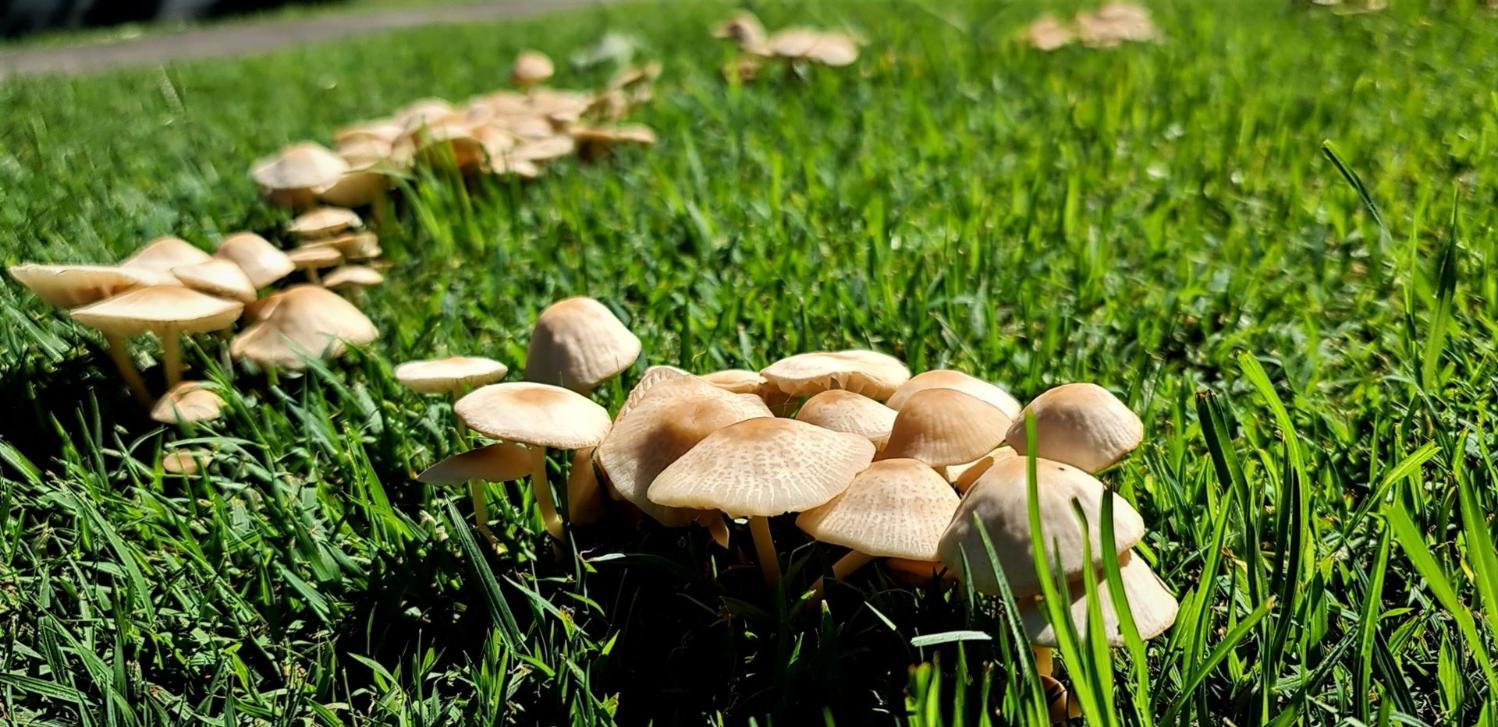
Past Features Archives (pre 2014)
Pittwater Online News was selected for preservation by the State Library of New South Wales and National Library of Australia. This title is scheduled to be re-archived regularly.
Archived Issues (2014 on) may be accessed here: pandora.nla.gov.au/tep/143700
